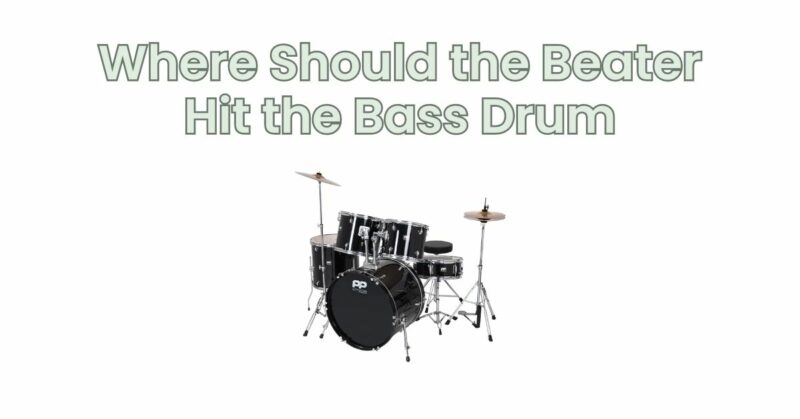The bass drum serves as the heartbeat of the drum set, providing the foundation and driving force behind the music. Achieving the desired sound and tone from the bass drum largely depends on where the beater strikes the drumhead. In this article, we will explore the different areas on the bass drum where the beater can hit, and the impact it has on the sound produced. Understanding these nuances will help you find the sweet spot and create the ideal sound for your playing style and musical preferences.
- Center of the Drumhead:
When the beater strikes the center of the bass drumhead, it produces a focused and punchy sound. This point of impact yields a strong attack with defined clarity and projection. The center of the drumhead is often favored for genres that require a pronounced and upfront bass drum sound, such as rock and metal. The punch and articulation in the center offer the necessary impact and cut through the mix.
- Slightly Off-Center:
Moving the beater slightly off-center towards the drumhead’s edge produces a warmer and more resonant sound. The off-center strike allows the drumhead to vibrate more freely, resulting in a rounder tone with increased depth and sustain. This positioning is often favored in genres like jazz and blues, where a fuller and more melodic bass drum sound is desired. The off-center strike provides a balanced blend between attack and resonance.
- Near the Drumhead Edge:
Striking the bass drumhead near its edge produces a softer and less pronounced sound. The beater’s impact on the outermost regions of the drumhead dampens the attack, resulting in a more mellow and subtle tone. This technique is commonly used in ballads, softer genres, or when a delicate touch is required. The edge strike provides a gentler response with reduced attack and a greater emphasis on the drum’s inherent warmth and resonance.
- Experimenting with Beater Position:
While the aforementioned areas are commonly used, it’s important to note that drummers often experiment with different beater positions to achieve their desired sound. The angle and height of the beater can also influence the resulting tone. Lowering the beater height can create a heavier and deeper sound, while raising it can produce a crisper and more articulate attack. Furthermore, adjusting the beater angle can help shape the attack and sustain characteristics. Experimentation with these variables is key to discovering your unique sound and achieving the desired tonal qualities.
- Drumhead Selection and Tuning:
In addition to beater placement, the selection of the drumhead and its tuning greatly impact the sound produced by the bass drum. Different drumhead types, such as single-ply or double-ply heads, coated or clear heads, and various muffling options, can further shape the overall sound and response of the bass drum. Experimenting with different drumheads and tuning ranges will allow you to fine-tune the sound and achieve the desired characteristics.
Conclusion:
Determining where the beater should hit the bass drum is a highly subjective process that depends on personal preference, playing style, and musical context. The center of the drumhead provides a punchy and defined attack, slightly off-center strikes offer a balanced blend of attack and resonance, and striking near the drumhead edge produces a softer and more mellow sound. Experimenting with different beater positions, angles, and heights, combined with drumhead selection and tuning, will help you find the sweet spot that suits your playing style and musical goals. Remember that the perfect sound is unique to each drummer, so don’t hesitate to explore and unleash your creativity to find the bass drum sound that truly resonates with you.


